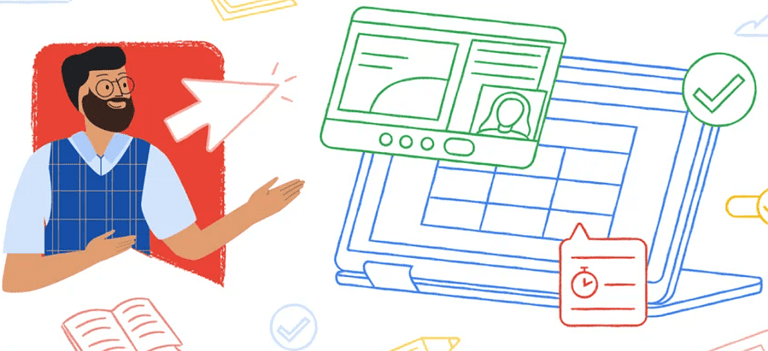Google for Education recently released some updates with new functionality for Chrome and Workspace. These new features should make it easier for students to learn and for teachers to hand out customized assignments.
The updates there were announced for ChromeOS, which is widely used in education, include a “reading mode. This feature removes distracting web elements so that students with dyslexia can better focus on the crucial content of a web page. This feature can be turned on and off through Chrome’s bookmarks and Reading List sidepanel.
Also, administrators of ChromeOS-based school laptops will now have more control over the data processed on Chromebooks. There has been quite a bit of criticism from the EU about how Google handles data on Chromebooks. They want to see more control so that student privacy is guaranteed.
Updates to Classroom tool
The Google Workspace for Education suite, Google’s productivity solutions for education, is getting updates to its Classroom tool. This tool is used for giving students assignments and checking homework.
The updated version will soon include new AI functionality such as so-called “practice sets”. These practice sets can automatically convert learning materials from teachers into assignments for students. In addition, they give teachers suggestions on possible topics they can prefer in their assignments to students.
Students with the intelligent practice sets, get the opportunity to receive hints on possible answers and feedback on their answers.
Furthermore, the Classroom tool now allows teachers to share videos with students and add questions to them. Students can then answer these questions like a video game. An attached analytics tool allows teachers to view these answers.
Docs, Slides and Meet applications
The various Docs, Slides and Meet applications within Google Workspace for Education are also getting updates. Teachers can now create templates for frequently used content such as lesson plans within Docs. These templates can then be easily inserted into a document via a shortcut. This should save a lot of manual and repetitive work.
Also now introduced are three interactive elements or “chips” that should make document creation easier. Two chips for keeping track of time act as a timer and a stopwatch. These will make it easier to measure, for example, how long students take to complete a particular task. A new “upvote” widget should give users feedback on documents.
Google Meet and Slides are getting upgrades that should bring together the functionality of both tools. Among other things, Slides receives the ability to present speaker notes in a presentation via Meet. Also, when two people jointly hold a presentation in the Google Meet for Education video conferencing system, it will be possible to better manage the slides.
Furthermore, the Google Meet tool now gets the ability to add subtitles to recordings. Subtitles are available in English, French, German, (Brazilian) Portuguese and Spanish, among other languages. Other languages are in the pipeline for this, according to Google.
Also read: Google expands use of generative AI in Google Cloud and Workspace
